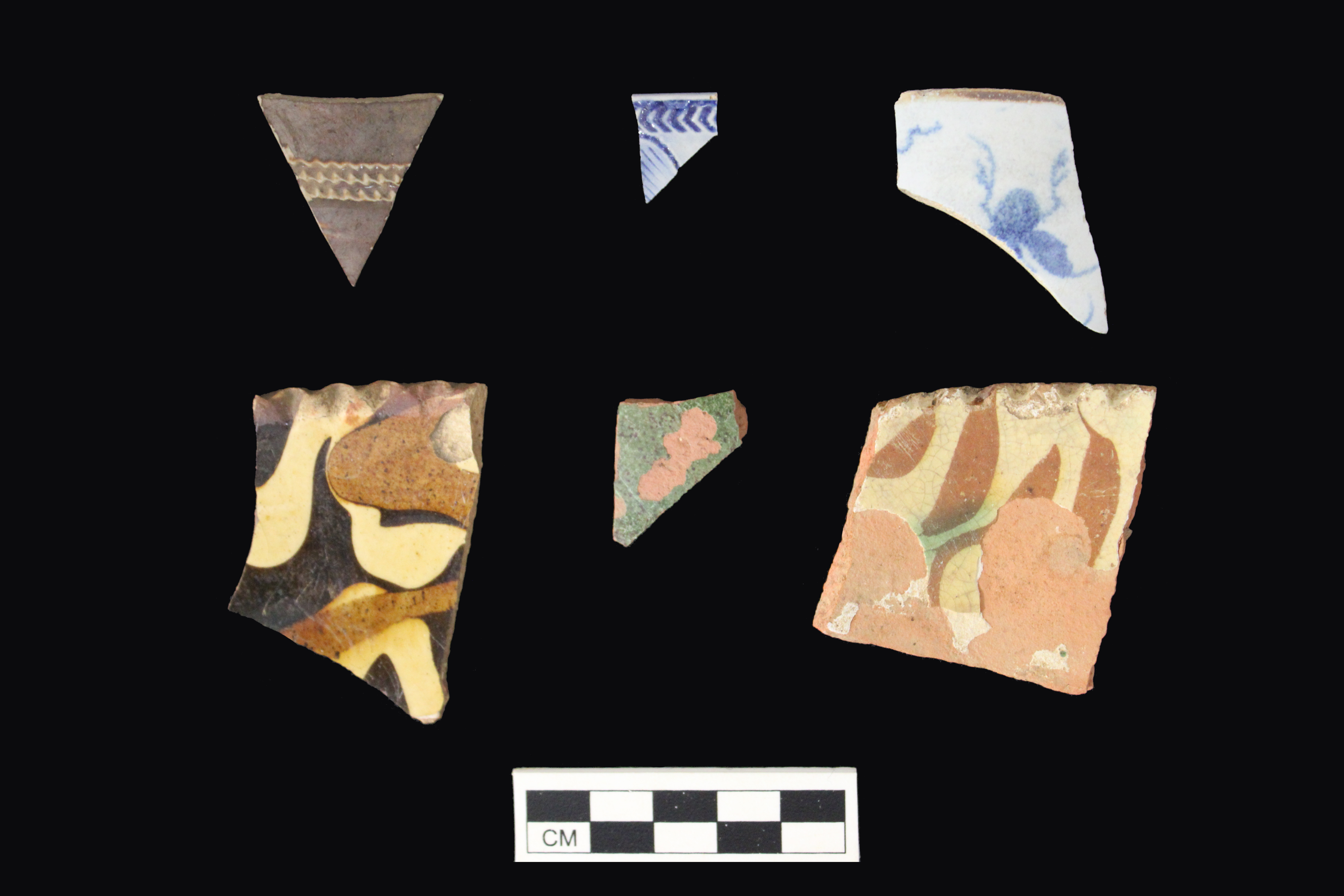Post 10. What's the Point?
Post 10. What’s the Point?
How do we know the Danial Rutan House site is as old as it is? Although we’ve searched archives for written information about the Rutans, Ryersons, Fullers, Thompsons and other site occupants, as is often the case, the documentary record doesn’t always provide a very clear or detailed picture of their lives. That’s where archaeology comes in.
The cumulative body of information that archaeologists have collected over the last century helps us date archaeological sites like this one and compare one site to another. At the Daniel Rutan House site, Hunter Research identified significant numbers of ceramic sherds, with the most prevalent earliest type being Staffordshire-type slipware. This is an earthenware with a buff, yellow or sometimes pale red body that has a clear lead glaze and a characteristic dark slip applied as a decoration in straight and curving lines. This type of ceramic started being made in the 17th century and was made well into the 18th century. A limited quantity of another slipware was found decorated in a likely Saintonge-type slip; a style that originated in France and was produced between 1700 and 1800. Although the examples of this ware type are few and fragmentary, their presence perhaps hints at a more direct connection to the Rutan family’s French Huguenot heritage.

